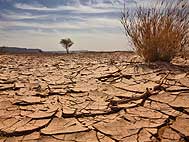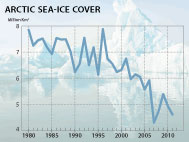| SEARCH |
-

Nov 17, 2015
Reflections on a three-decade legacy
The International Geosphere-Biosphere Programme (IGBP) will come to a close at t...
-
Nov 17, 2015
Use of and access to content on this website
Text and images produced by IGBP in house are free to use with appropriate credi...
-
Nov 12, 2015
Bella Gaia performance and panel discussion to mark IGBP's closure
A musical performance by Bella Gaia will celebrate the achievements and legacy o...
-

Towards Future Earth:
evolution or revolution?
During its three decades of existence, the International Geosphere-Biosphere Pro...
-
A personal note on IGBP and the social sciences
Humans are an integral component of the Earth system as conceptualised by IGBP. João Morais recalls key milestones in IGBP’s engagement with the social sciences and offers some words of advice for Future Earth.
-
IGBP and Earth observation:
a co-evolution
The iconic images of Earth beamed back by the earliest spacecraft helped to galvanise interest in our planet’s environment. The subsequent evolution and development of satellites for Earth observation has been intricately linked with that of IGBP and other global-change research programmes, write Jack Kaye and Cat Downy .
-
Deltas at risk
Around 500 million people worldwide live on deltas, but many of the world's deltas are sinking due ...
-
Climate change: the state of the science
A new data visualization released on the first day of the plenary negotiations at the UNFCCC’s clima...
-
Climate Change:
the State of the Science
Videos now online from the Stockholm public forum to mark the launch of the IPCC's climate report, 2...
BVOC-aerosol-climate interactions in the global aerosol-climate model CHAM5.5-HAM2
Atmospheric Chemistry and Physics (2012)
Makkonen R, Asmi A, Kerminen V‐M, Boy M, Arneth A, Guenther A and Kulmala M
DOI: 10.5194/acp‐12-‐1‐2012
Vol 12, pp 10077‐10096

Abstract
The biosphere emits volatile organic compounds (BVOCs) which, after oxidation in the atmosphere, can partition on the existing aerosol population or even form new particles. The large quantities emitted provide means for a large potential impact on both aerosol direct and indirect effects. Biogenic responses to atmospheric temperature change can establish feedbacks even in rather short timescales. However, due to the complexity of organic aerosol partitioning, even the sign of these feedbacks is of large uncertainty. We use the global aerosol-climate model ECHAM5.5-HAM2 to explore the effect of BVOC emissions on new particle formation, clouds and climate. Two BVOC emission models, MEGAN2 and LPJ-GUESS, are used. MEGAN2 shows a 25% increase while LPJ-GUESS shows a slight decrease in global BVOC emission between years 2000 and 2100. The change of shortwave cloud forcing from year 1750 to 2000 ranges from −1.4 to −1.8 W m−2 with 5 different nucleation mechanisms. We show that the change in shortwave cloud forcing from the year 2000 to 2100 ranges from 1.0 to 1.5 W m−2. Although increasing future BVOC emissions provide 3–5% additional CCN, the effect on the cloud albedo change is modest. Due to simulated decreases in future cloud cover, the increased CCN concentrations from BVOCs can not provide significant additional cooling in the future.
IGBP closed at the end of 2015. This website is no longer updated.
-

Global Change Magazine No. 84
This final issue of the magazine takes stock of IGBP’s scientific and institutional accomplishments as well as its contributions to policy and capacity building. It features interviews of several past...
-

Global Change Magazine No. 83
This issue features a special section on carbon. You can read about peak greenhouse-gas emissions in China, the mitigation of black carbon emissions and the effect of the 2010-2011 La Niña event on gl...
-
INTERGOVERNMENTAL PANEL ON CLIMATE CHANGE:
How green is my future?
UN panel foresees big growth in renewable energy, but policies will dictate just how big.
-
UK:
'The Anthropocene: a new epoch of geological time?'
Royal Society, Philosphical Transactions A




















